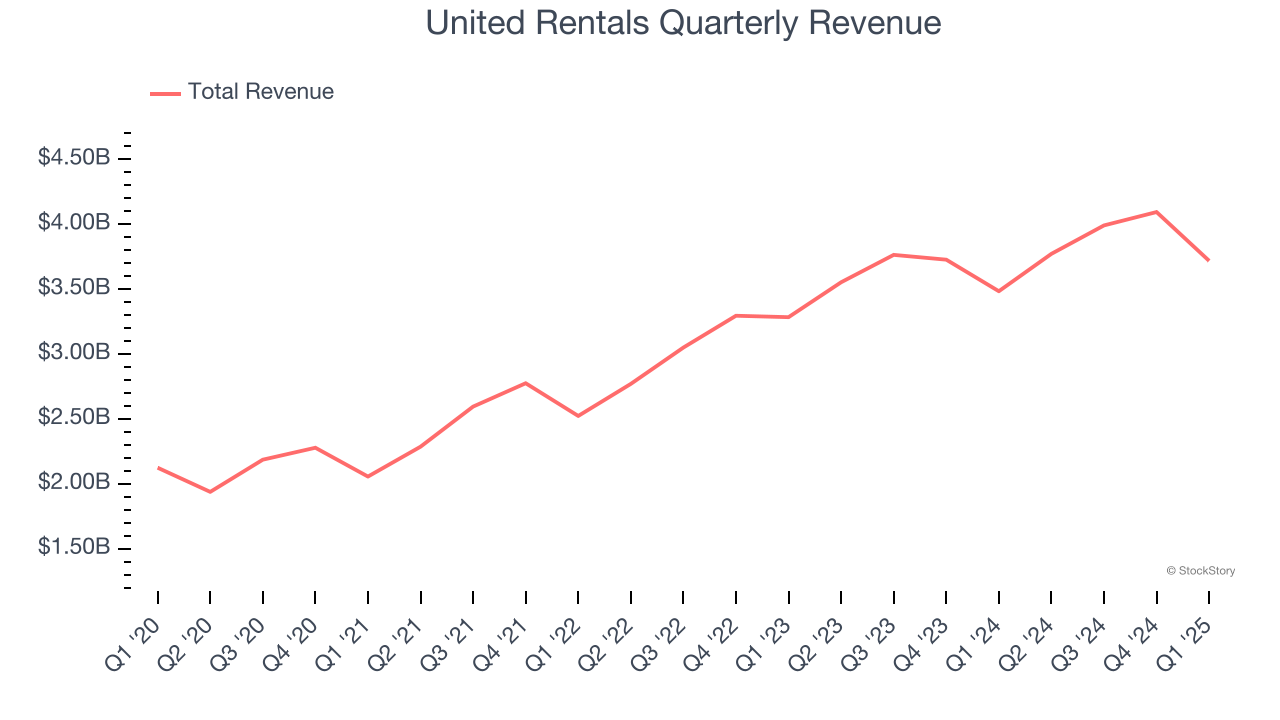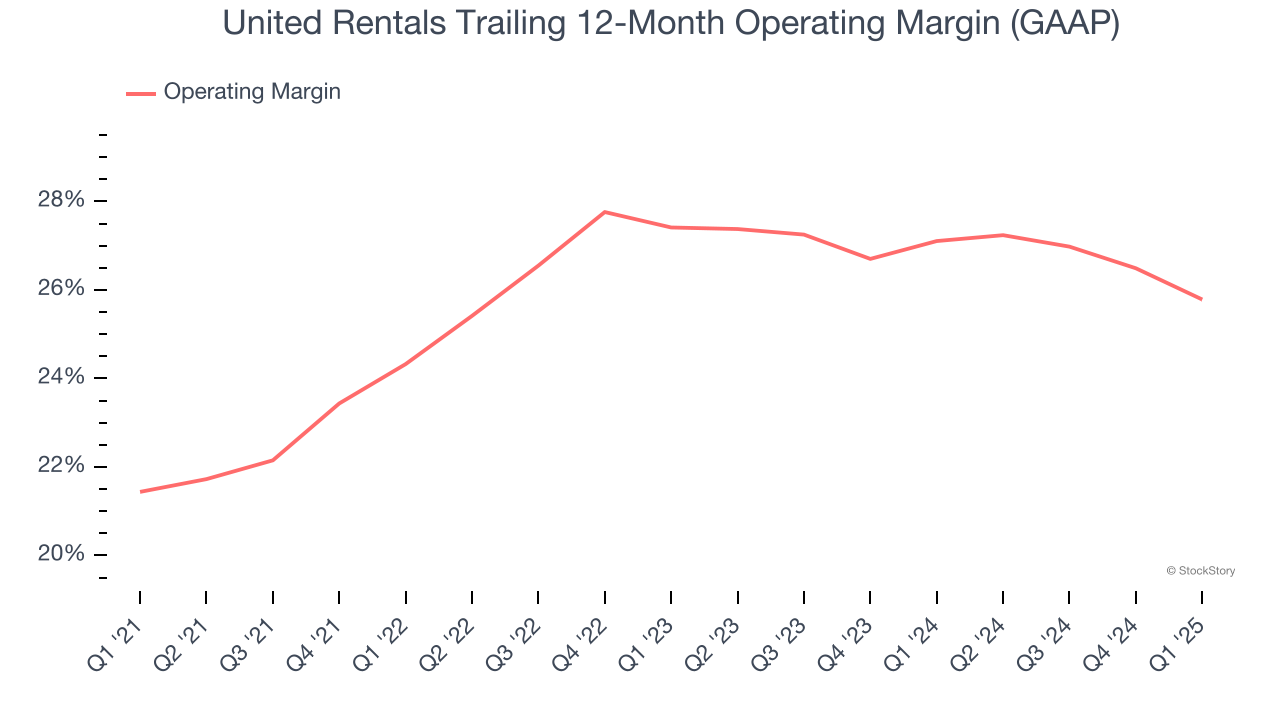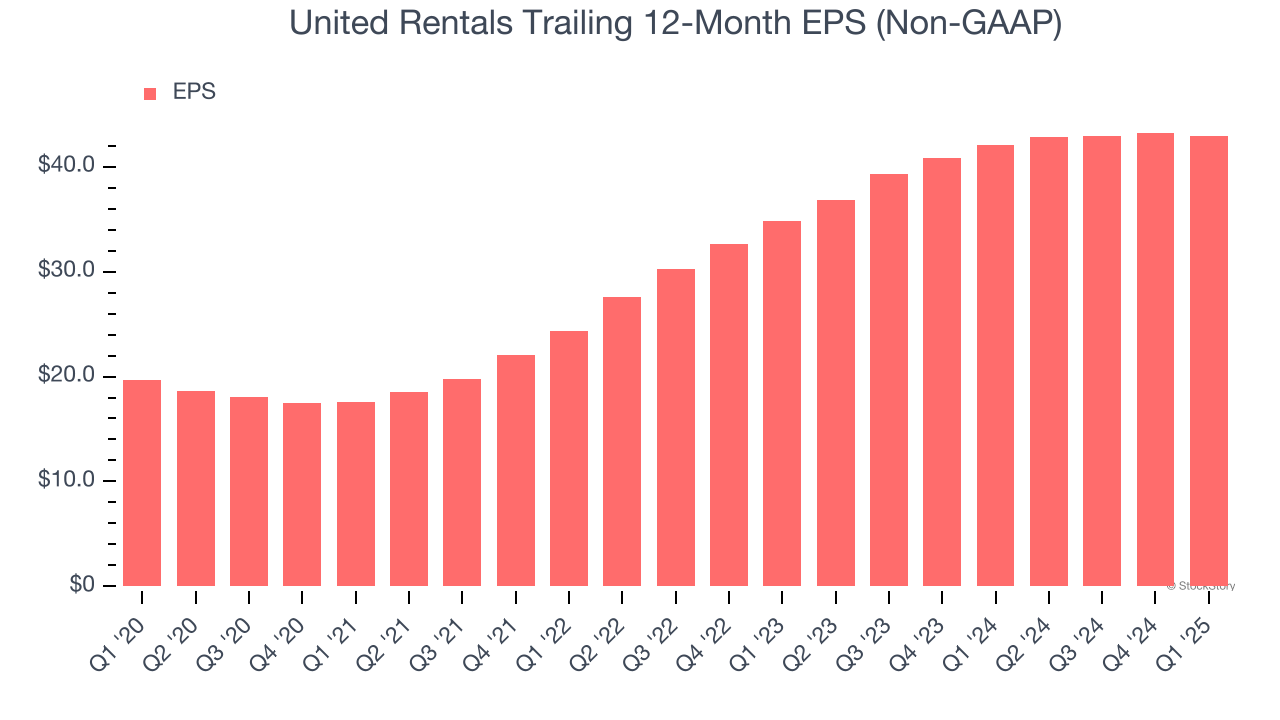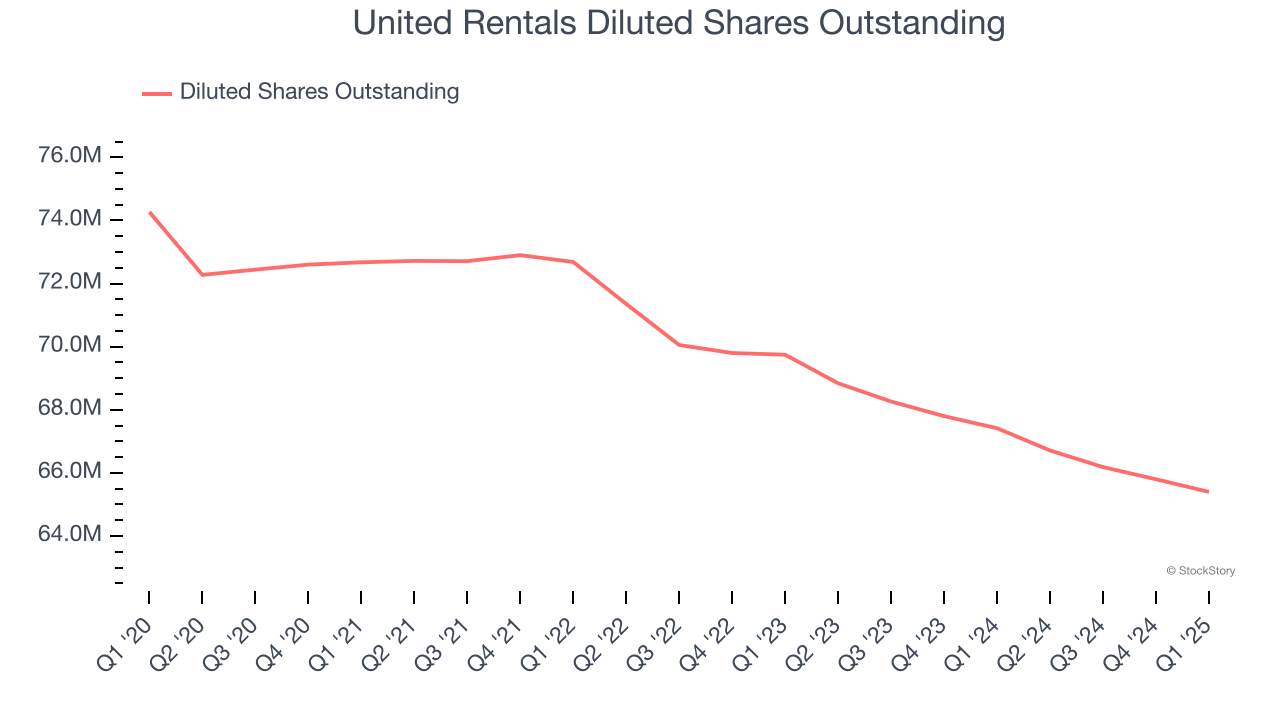
Equipment rental company United Rentals (NYSE: URI) reported revenue ahead of Wall Street’s expectations in Q1 CY2025, with sales up 6.7% year on year to $3.72 billion. The company expects the full year’s revenue to be around $15.85 billion, close to analysts’ estimates. Its non-GAAP profit of $8.86 per share was 0.5% above analysts’ consensus estimates.
Is now the time to buy United Rentals? Find out by accessing our full research report, it’s free.
United Rentals (URI) Q1 CY2025 Highlights:
- Revenue: $3.72 billion vs analyst estimates of $3.63 billion (6.7% year-on-year growth, 2.5% beat)
- Adjusted EPS: $8.86 vs analyst estimates of $8.81 (0.5% beat)
- Adjusted EBITDA: $1.67 billion vs analyst estimates of $1.61 billion (44.9% margin, 3.6% beat)
- The company reconfirmed its revenue guidance for the full year of $15.85 billion at the midpoint
- EBITDA guidance for the full year is $7.33 billion at the midpoint, in line with analyst expectations
- Operating Margin: 21.6%, down from 24.4% in the same quarter last year
- Free Cash Flow Margin: 29.1%, up from 24.6% in the same quarter last year
- Market Capitalization: $37.55 billion
Matthew Flannery, Chief Executive Officer of United Rentals, said, “2025 is off to a solid start, reflecting demand across both our construction and industrial end-markets. I’m pleased with the team’s commitment to putting our customers first, which ultimately translated to record first-quarter revenue and adjusted EBITDA. I’m also pleased to reaffirm our full-year guidance, based on both the momentum we’re carrying into our busy season and continued positive customer sentiment, which, together, reinforce our expectations for another year of profitable growth.”
Company Overview
Owning the largest rental fleet in the world, United Rentals (NYSE: URI) provides equipment rental and related services to construction, industrial, and infrastructure industries.
Specialty Equipment Distributors
Historically, specialty equipment distributors have boasted deep selection and expertise in sometimes narrow areas like single-use packaging or unique lighting equipment. Additionally, the industry has evolved to include more automated industrial equipment and machinery over the last decade, driving efficiencies and enabling valuable data collection. Specialty equipment distributors whose offerings keep up with these trends can take share in a still-fragmented market, but like the broader industrials sector, this space is at the whim of economic cycles that impact the capital spending and manufacturing propelling industry volumes.
Sales Growth
A company’s long-term performance is an indicator of its overall quality. Any business can put up a good quarter or two, but the best consistently grow over the long haul. Luckily, United Rentals’s sales grew at an impressive 10.7% compounded annual growth rate over the last five years. Its growth surpassed the average industrials company and shows its offerings resonate with customers, a great starting point for our analysis.

Long-term growth is the most important, but within industrials, a half-decade historical view may miss new industry trends or demand cycles. United Rentals’s annualized revenue growth of 12.1% over the last two years is above its five-year trend, suggesting its demand was strong and recently accelerated. 
This quarter, United Rentals reported year-on-year revenue growth of 6.7%, and its $3.72 billion of revenue exceeded Wall Street’s estimates by 2.5%.
Looking ahead, sell-side analysts expect revenue to grow 3.3% over the next 12 months, a deceleration versus the last two years. This projection doesn't excite us and suggests its products and services will see some demand headwinds. At least the company is tracking well in other measures of financial health.
Today’s young investors won’t have read the timeless lessons in Gorilla Game: Picking Winners In High Technology because it was written more than 20 years ago when Microsoft and Apple were first establishing their supremacy. But if we apply the same principles, then enterprise software stocks leveraging their own generative AI capabilities may well be the Gorillas of the future. So, in that spirit, we are excited to present our Special Free Report on a profitable, fast-growing enterprise software stock that is already riding the automation wave and looking to catch the generative AI next.
Operating Margin
Operating margin is a key measure of profitability. Think of it as net income - the bottom line - excluding the impact of taxes and interest on debt, which are less connected to business fundamentals.
United Rentals has been a well-oiled machine over the last five years. It demonstrated elite profitability for an industrials business, boasting an average operating margin of 25.6%. This result isn’t surprising as its high gross margin gives it a favorable starting point.
Analyzing the trend in its profitability, United Rentals’s operating margin rose by 4.3 percentage points over the last five years, as its sales growth gave it operating leverage.

In Q1, United Rentals generated an operating profit margin of 21.6%, down 2.8 percentage points year on year. Since United Rentals’s operating margin decreased more than its gross margin, we can assume it was less efficient because expenses such as marketing, R&D, and administrative overhead increased.
Earnings Per Share
Revenue trends explain a company’s historical growth, but the long-term change in earnings per share (EPS) points to the profitability of that growth – for example, a company could inflate its sales through excessive spending on advertising and promotions.
United Rentals’s EPS grew at a spectacular 16.9% compounded annual growth rate over the last five years, higher than its 10.7% annualized revenue growth. This tells us the company became more profitable on a per-share basis as it expanded.

We can take a deeper look into United Rentals’s earnings quality to better understand the drivers of its performance. As we mentioned earlier, United Rentals’s operating margin declined this quarter but expanded by 4.3 percentage points over the last five years. Its share count also shrank by 11.9%, and these factors together are positive signs for shareholders because improving profitability and share buybacks turbocharge EPS growth relative to revenue growth. 
Like with revenue, we analyze EPS over a more recent period because it can provide insight into an emerging theme or development for the business.
For United Rentals, its two-year annual EPS growth of 11.1% was lower than its five-year trend. We still think its growth was good and hope it can accelerate in the future.
In Q1, United Rentals reported EPS at $8.86, down from $9.15 in the same quarter last year. This print was close to analysts’ estimates. Over the next 12 months, Wall Street expects United Rentals’s full-year EPS of $42.95 to grow 4%.
Key Takeaways from United Rentals’s Q1 Results
We enjoyed seeing United Rentals beat analysts’ revenue, EPS, and EBITDA expectations this quarter. Overall, this quarter had some key positives. The stock traded up 2% to $600 immediately following the results.
United Rentals put up rock-solid earnings, but one quarter doesn’t necessarily make the stock a buy. Let’s see if this is a good investment. What happened in the latest quarter matters, but not as much as longer-term business quality and valuation, when deciding whether to invest in this stock. We cover that in our actionable full research report which you can read here, it’s free.

